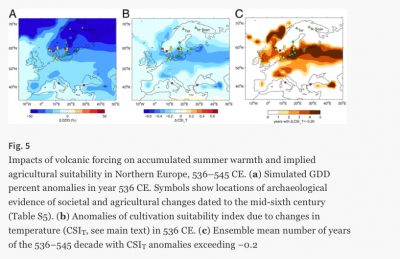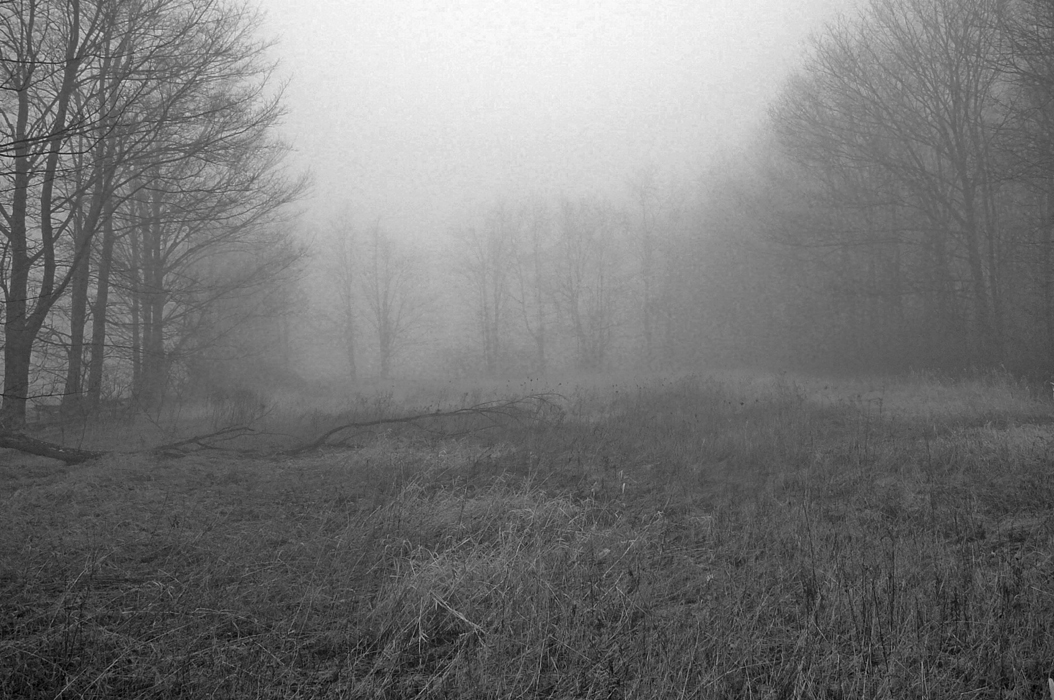Severe deterioration of living conditions in Scandinavia in the years’ AD 536 – 50 was caused by two volcanic explosions following each other
Climatic and societal impacts of a volcanic double event at the dawn of the Middle Ages
By Matthew Toohey, Kirstin Krüger, Michael Sigl, Frode Stordal, and Henrik Svensen
First online:
In: Climatic Change (Open Source) Published on the web April 2016
DOI: 10.1007/s10584-016-1648-7
ABSTRACT:

In 536 CE, European observers documented a mysterious cloud which dimmed the sun’s light for at least a year and presumably longer. For a long time, scientists speculated as to the cause of this dust veil. Finally, it seems the culprits have been identified.
Volcanic activity in and around 536 CE led to severe cold and famine, which continued until AD 660. Speculatively, this set of events has been linked to large-scale societal crises around the globe. Using a coupled aerosol-climate model, with eruption parameters constrained by recently re-dated ice core records and historical observations of the aerosol cloud, scientists recently reconstructed the radiative forcing resulting from a sequence of two massive volcanic eruptions in 536 and 540 CE.
Based on this, they have estimated that the decadal-scale Northern Hemisphere (NH) extra-tropical radiative forcing from this volcanic “double event” was more significant than others identified and reconstructed in the last 1200 years.
Earth system model simulations, including the volcanic forcing, show peak NH mean temperature anomalies reaching more than −2 °C and show agreement with the limited number of available maximum latewood density temperature reconstructions.
However, the simulations also produced decadal-scale anomalies of the Arctic sea ice. In sum, the events in 536 – 40 may be estimated to have directly inflicted the climate in the Northern Hemisphere at least until the summer of 543.
This simulated cooling has been interpreted to impact on European agricultural production. It implies a high likelihood of multiple years of significant decreases in crop production across Scandinavia, supporting the theory of a connection between the 536 and 540 eruptions and evidence of societal crisis dated to the mid-6th century. Furthermore, it appears on maps published by the scientists that a broad belt across Denmark, Sweden and the Baltic was the area which suffered the most.
The 536 mystery cloud was not only linked to crop failures and famines by ancient scholars but has also been speculatively linked to several major societal crises throughout the northern hemisphere, including the European outbreak of the plague of Justinian in 541 CE, demographic decline and migration.
